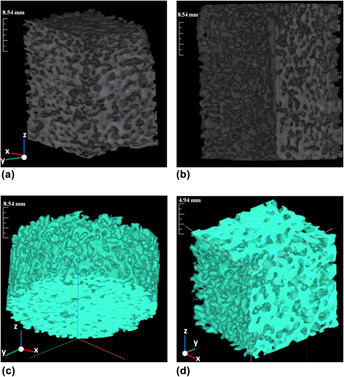Crossref Citations
This article has been cited by the following publications. This list is generated based on data provided by
Crossref.
Wang, Yingwu
Zuo, Xiaoqing
Kong, Dehao
and
Zhou, Yun
2019.
A comparative analysis of sound absorption performance of ZL104/aluminum fiber composite foam.
Journal of Materials Research,
Vol. 34,
Issue. 21,
p.
3717.
Wang, Yingwu
Zuo, Xiaoqing
Kong, Dehao
Zhang, Fangjie
and
Ran, Songjiang
2019.
Pore structure and compressive property of high porosity ZL104 alloy/aluminium fiber composite foam.
Materials Research Express,
Vol. 6,
Issue. 9,
p.
0965b2.
Liu, P.S.
and
Ma, X.M.
2021.
Special review: Mechanical investigation on failure modes of reticular porous metal foams under different loadings in engineering applications.
Multidiscipline Modeling in Materials and Structures,
Vol. 17,
Issue. 4,
p.
814.
Wang, Xinjie
Wang, Xinzhu
Jian, Kailin
Xu, Linji
Ju, Anqi
Guan, Zhongwei
and
Ma, Li
2021.
Mechanical Properties of Al Foams Subjected to Compression by a Cone-Shaped Indenter.
ACS Omega,
Vol. 6,
Issue. 42,
p.
28150.
Rivera-Salinas, Jorge E.
Gregorio-Jáuregui, Karla M.
Cruz-Ramírez, Alejandro
Romero-Serrano, José A.
Ramírez-Vargas, Eduardo
Gutierréz-Pérez, Víctor H.
and
Hernández-Quintanar, Luis F. J.
2021.
Determination of Threshold Pressure for Infiltration of NaCl Preforms by a Zinc Base Alloy and its Effect on Young´s Modulus by Numerical Simulation.
Metallurgical and Materials Transactions A,
Vol. 52,
Issue. 2,
p.
826.
Yang, Wei
Luo, Zhao-Ping
Bao, Wei-Kang
Xie, Hui
You, Ze-Sheng
and
Jin, Hai-Jun
2021.
Light, strong, and stable nanoporous aluminum with native oxide shell.
Science Advances,
Vol. 7,
Issue. 28,
Thiyagarajan, Raja
and
Senthil kumar, M.
2021.
A Review on Closed Cell Metal Matrix Syntactic Foams: A Green Initiative towards Eco-Sustainability.
Materials and Manufacturing Processes,
Vol. 36,
Issue. 12,
p.
1333.
Sharma, Ankit
Kanyadhan Vijayaraghavan, Sai Srinivasan
Gupta, Amit Kumar
and
Ravindran, Sujith
2023.
B4C‐Reinforced Al–Zn Foams Having Superior Energy Absorption Efficiency.
Advanced Engineering Materials,
Vol. 25,
Issue. 1,
Suzuki, Ryosuke
Ikeda, Takaya
Fujiwara, Keishi
Mita, Kazuya
Hangai, Yoshihiko
Fujii, Hidetoshi
and
Kobayashi, Shigeaki
2024.
Fundamental Aspects of Wire Arc Additive Manufacturing for Aluminum Foams.
MATERIALS TRANSACTIONS,
Vol. 65,
Issue. 6,
p.
672.
Yang, Huai-Bin
Lu, Yi-Xing
Yue, Xin
Liu, Zhao-Xiang
Sun, Wen-Bin
Zheng, Wen-Pei
Guan, Qing-Fang
and
Yu, Shu-Hong
2025.
Multiscale integral synchronous assembly of cuttlebone-inspired structural materials by predesigned hydrogels.
Nature Communications,
Vol. 16,
Issue. 1,
